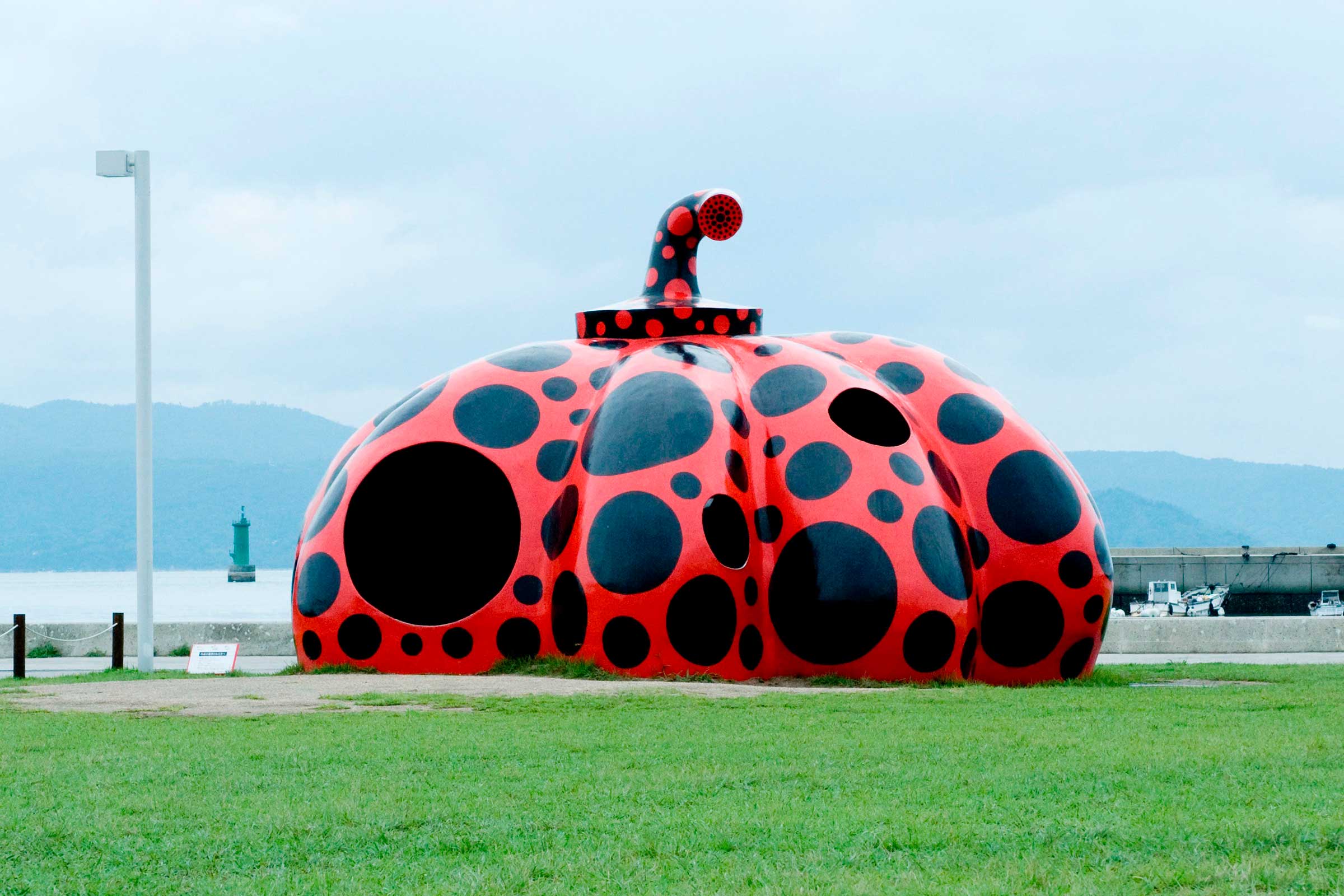The Setouchi Triennale opens today in the Seto Inland Sea

We offer an overview of Setouchi Triennale’s fourth edition and speak with artist Yasuaki Igarashi whose work resonates with the festival’s theme, Restoration of the Sea
Image by Osamu Nakamura, courtesy of Setouchi Triennale Executive Committee
Sandy beaches, wooden houses, wild forests, abandoned schools, rice fields: these are the scenic locations in which countless creative projects can be found as part of this year’s Setouchi Triennale, which opens today (April 26). The three-yearly Japanese art festival, which launched in 2010, spans a picturesque expanse of 12 small fishing islands and two ports in the Seto Inland Sea (also known as Setouchi).
Once famed for its thriving trade routes and industry, the region has become increasingly isolated in recent decades due to depopulation and economic decline — a common scene across much of rural Japan.
The goal of the festival? To revitalise the region through the power of contemporary art and architecture — with impressive results. In addition to the ever-growing permanent collection of artworks, museums and installations on Naoshima and neighbouring islands, the festival significantly bolsters the region’s art credentials.
This year — the biggest to date — there are a total of 213 artworks (90 of which are completely new), created by 225 artists from 32 regions around the world. Highlights — among many — include Leandro Earlich’s washing machine installations in a new art hub called Little Island Shops on Megijima; Sarah Westphal’s octopus installation titled The Sea Within - The See Within on Ogijima; and Beatriz Milhazes’ Yellow Flower Dream on Inujima.
And fruits of the project — painstakingly masterminded by its general director Fram Kitagawa of Art Front Gallery — can already be seen: depopulation appears to be slowing as young families set up homes, shops and businesses across the region (and on one island, a school has even reopened after it shut down due to a dwindling student body).
Japanese artist Yasuaki Igarashi is among this year’s exhibitors, with his project Sora-Ami: Knitting the Sky, an ambitious, evolving work that involves the creation of a vast, rainbow-bright fishing net, woven by residents and fishermen on 12 islands.
The artist, who first created Sora-Ami for the festival in 2013, is inspired by the concept ‘viewpoints of the ocean’ (a perspective he honed while navigating the 4,000-kilometre journey from Japan to Micronesia by yacht). Here, he shares insights into his new artwork and how contemporary art can bring communities together.
Danielle Demetriou: What is the concept behind Sora-Ami?
Yasuaki Igarashi: Sora-Ami is about connecting people and continuing the memories of the islands by weaving a fishing net together. This project will involve holding weaving workshops with fishermen and locals on 12 islands. After the process, people may see the landscape differently through the mesh of the completed net. The colourful fishing net will look different depending on weather and tide — and when finished (measuring 6.5 metres high and 120 metres long), it will become a symbolic icon of connection through the sea.
Why fishing nets?
Fishing nets have been a common tool since prehistory and weaving is one of mankind’s oldest techniques. When you actually weave a fishing net on the beach like our ancestors have always done, you feel closely connected to the wind, the birdsong, the sound of the waves. It’s like awakening your memory from deep inside of being a maritime people, which is a new feeling but somehow intimate at the same time. Above all, the action of weaving a fishing net has the power to bring people together. Weaving fishing net is a symbolic behaviour that connects the communities.
How have locals reacted to the project?
It wasn’t easy in the beginning. Some fishermen asked why they should weave for the artwork when they need to repair their own fishing nets. But after joining in several times, they have become interested in how other islands are doing, how fast they are going or how beautiful the weaving is. It has become like an exciting process preparing for a local festival. At a final ceremony in autumn, we will link each fishing net from each of the five islands and the residents can all celebrate together.
What have you enjoyed most?
It’s been a deep cultural experience witnessing friendships between local people, hearing old stories of island life, learning about folklore and old customs — this was the most enjoyable part of this project. It’s the same as being trusted, and gaining trust was the most difficult part.
How would you describe the region?
An archipelago in an inland sea is very rare. There is a long history and culture of people living with the complex tidal currents around scattered islands. Through the Sora-Ami project, I encountered different characters, dialects, words and atmospheres on each island.
What impact do these art projects have on the region?
These art projects have the power to connect people, to one another and also to the land. It provides a chance to rediscover the relationship between people and nature, and make a new connection in a forgotten local society. I hope my project also offers the opportunity for local communities to look into the universal ‘humanness’ of us all living together on this planet, connecting us all to each other and to nature.
Text / Danielle Demetriou
Images / Courtesy of Yasuaki Igarashi and the Setouchi Triennale Executive Committee
The Setouchi Triennale runs in three sessions this year: Spring (26 April-26 May), Summer (19 July-25 August) and Autumn (28 September-4 November).
Yasuaki Igarashi, Sora-Ami:Knitting the Sky, Setouchi Triennale 2016. Image by Yasuaki Igarashi
Knitting workshop on the island. Image by Yasuaki Igarashi
Yasuaki Igarashi, Sora-Ami:Knitting the Sky, Setouchi Triennale 2016. Image by Yasuaki Igarashi
Portrait of Yasuaki Igarashi
Yayoi Kusama, Red Pumpkin, 2006 Naoshima Miyanoura Port Square. Image by Daisuke Aochi











